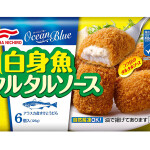Supercenters will continue to be a strong retail format in the future, while drug and dollar stores will also remain strong through 2014, according to a new report focusing on the U.S. retail food industry.
Meanwhile, traditional grocery store sales suffered in 2009 and will continue to plummet in the next four years, according to Barrington, Ill.-based Willard Bishop’s Future of Food Retailing report.
Despite a difficult economic climate last year, supercenter sales rose 7.8 percent to USD 164 billion, found Willard Bishop. Supercenters will continue their aggressive sales growth at a rate of more than 7 percent annually into 2014, according to Willard Bishop projections.
At drug stores, food and consumable product sales increased 6.8 percent to USD 53.9 billion in 2009, and Willard Bishop projects drug store sales growth of 3.1 percent annually through 2014.
As SeafoodSource previously reported, drug chains have expanded their selection of canned and frozen seafood items.
“CVS is leading the charge with its [new] format, with traditional health and beauty care on the left side of the store and traditional grocery on the right side of the store,” said Craig Rosenblum, a partner at Willard Bishop.
Supercenters are doing well with all perishable departments, because they consistently focus on growing those areas of the store, said Rosenblum. For example, a new Wal-Mart Supercenter in Chicago devotes 50 percent of its 100,000-square-foot store to grocery offerings.
“Despite commodity fluctuations, canned seafood is a staple, and prices [on canned seafood] are better at supercenters,” said Rosenblum.
Conversely, traditional grocery store sales increased only 0.9 percent in 2009 to USD 467.7 billion. By 2014, Willard Bishop expects traditional supermarket share of food retail dollars to decrease by 3.5 percent to 44.1 percent share of the market.
“Just to be the neighborhood grocer is not good enough to survive … because of the magnitude of all the shopping choices. What is it that is going to make you different and a more desirable place to shop?” asked Rosenblum. If a grocery store is near a Wal-Mart supercenter, for example, the grocer will not be able to compete on price, she explained.
“However, is the quality of your seafood, meat, deli and all perishables better? That is a plus,” said Rosenblum.
In fact, while 75 percent of shoppers care most about “price” when shopping for groceries, 69 percent care about buying “high quality meat,” according to a 2010 Willard Bishop survey.
All Foodservice & Retail stories >





